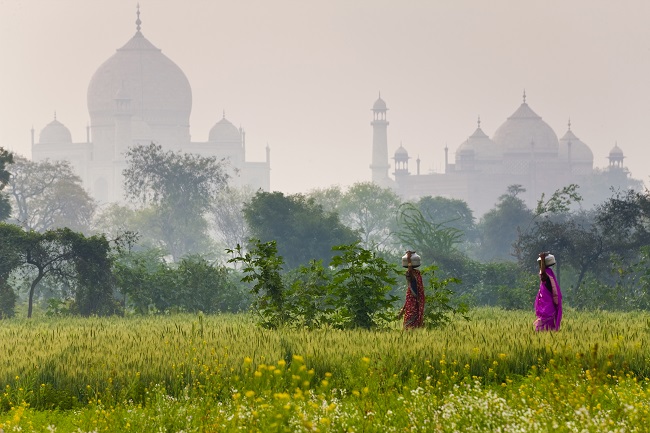Business Travel Also Achieves Record Figures
India’s tourism sector is experiencing an unprecedented boom, with international visitor spending reaching record highs in 2024. According to the latest data from the World Travel & Tourism Council (WTTC), international visitor expenditure in India hit ₹3.1 trillion, a significant 9% increase over the previous peak in 2019. Business travel has also seen remarkable growth, surpassing pre-pandemic levels.


International Tourism Surges Beyond Expectations
After a period where domestic travel primarily sustained the sector, the WTTC’s Economic Impact Research (EIR) reveals that international tourism in India has not only recovered but is stronger than ever. While domestic travel remains a powerful force, with spending soaring to ₹15.5 trillion (22% above 2019 levels), the resurgence of international visitors is now propelling the industry into a new era of expansion.
The Travel & Tourism sector’s overall contribution to the Indian economy last year was nearly ₹21 trillion, a substantial 20% increase from 2019. This sector continues to be a crucial source of employment and opportunity, particularly for India’s young, educated population facing rapid automation. The WTTC emphasizes that strengthening infrastructure, including high-speed rail and smart mobility solutions, will be vital to unlock the sector’s full potential and elevate its GDP contribution to 10-11%.
Furthermore, the industry supported an all-time high of almost 46.5 million jobs, accounting for 9.1% of total employment across India. India welcomed 20 million international visitors in 2024, exceeding the 2019 figures by 2.3 million. This surge reaffirms India’s standing as a premier global destination and highlights renewed international confidence in its diverse tourism offerings.
Policy Support Crucial for Sustained Growth
To maintain this impressive momentum, the WTTC advocates for sustained investment and targeted policy support. The organization urges the Indian government to reconsider its recent decision to reduce funding for overseas tourism promotion.


Ms. Julia Simpson, WTTC President & CEO, commented, “India’s Travel & Tourism sector is experiencing unprecedented growth, with international visitor numbers now at record highs after a period of strong domestic reliance.”
Simpson strongly supports the government’s initiatives to simplify the e-visa process. She noted, “While visa-on-arrival and e-visa systems are in place, reciprocal policies and long delays for key markets like the U.S., where appointments are reportedly unavailable until 2026, continue to hinder tourists. Making it easier to visit India is one of the fastest ways to unlock further international arrivals and spending.”
To bolster this growth and ensure long-term resilience, the WTTC has signed a Memorandum of Understanding (MoU) with WTTCII to amplify India’s tourism voice globally. This collaboration combines WTTC’s international influence with WTTCII’s strong national presence, aiming to strengthen policy coherence and provide a model for global-local tourism leadership.
The global tourism body’s research also indicates that India’s business travel is witnessing record expansion, with combined domestic and international spending reaching ₹1.1 trillion last year, surpassing the 2019 peak by 2.6%.
Outlook: Continued Growth and Future Potential
The WTTC forecasts another record-breaking year for India’s Travel & Tourism sector. Its economic contribution is projected to exceed ₹22 trillion in 2025, with employment in the sector expected to reach over 48 million. International visitor spend is anticipated to reach ₹3.2 trillion, while domestic traveler spending is set to hit ₹16 trillion.
Looking further ahead to 2035, the Travel & Tourism sector’s contribution to the national economy is forecast to almost double, reaching just under ₹42 trillion, employing nearly 64 million people.
India is exceptionally well-positioned to become one of the world’s most dynamic tourism economies, thanks to its vibrant blend of heritage, natural beauty, and modern innovation. This includes unlocking the significant potential of small and medium-sized enterprises, which form the backbone of the sector and drive innovation across communities and regions.
The WTTC calls on the government to match the sector’s resilience and ambition with clear, consistent policy support to ensure this promising trajectory continues.
Also Read
International Tourists Flock to Prayagraj for Mahakumbh 2025
Watch on Youtube
KARNATAKA INTERNATIONAL TRAVEL EXPO (KITE 2025) Inaugural Function
